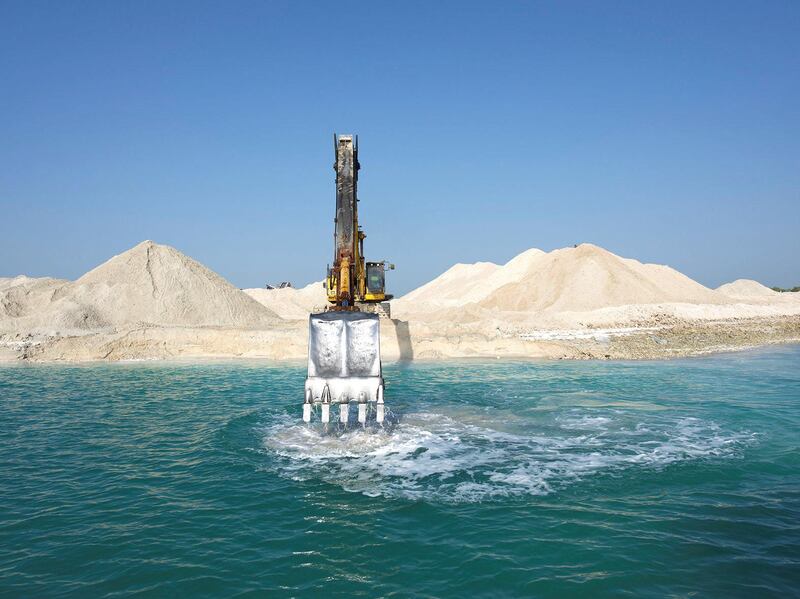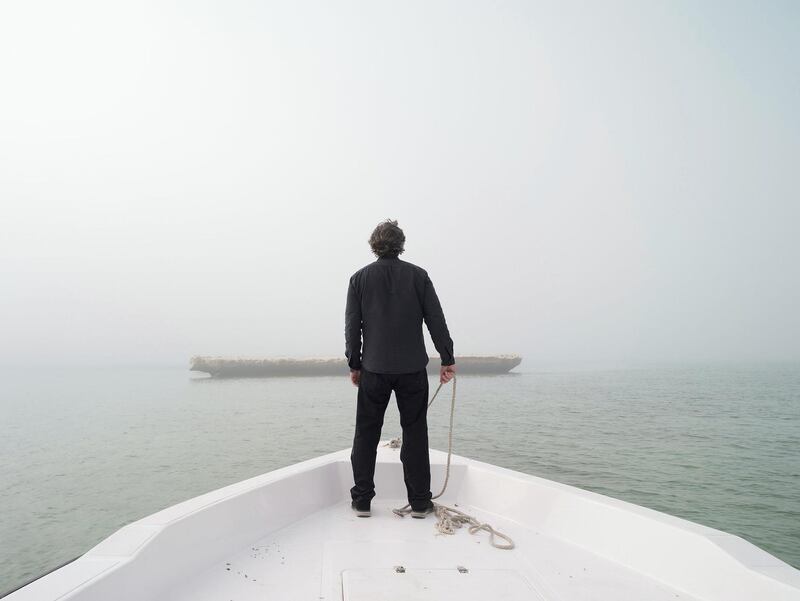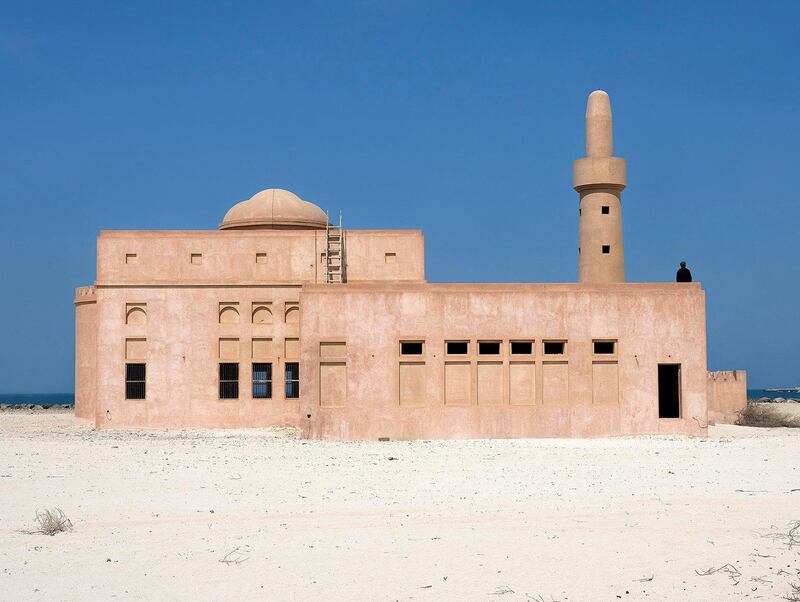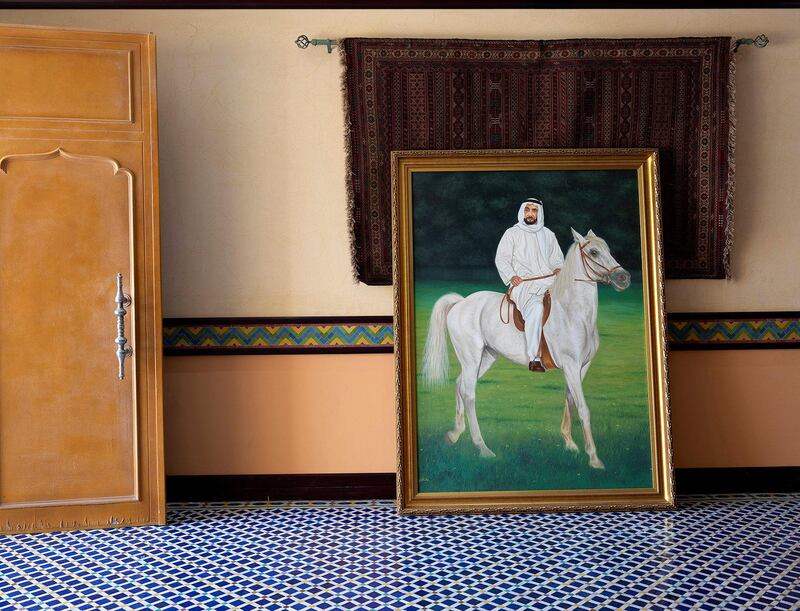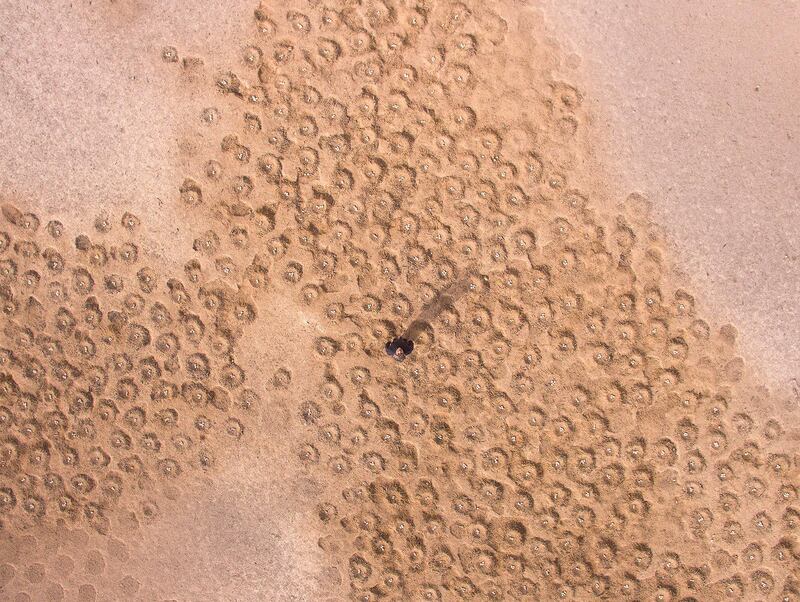Tarek Al-Ghoussein's latest project started, he says, when he read in The National that Abu Dhabi has 215 islands. "215?" he recalls. "I thought, I've lived here five years, and in the UAE for 20, and had no idea about that number. It blew me away."
It happened to be just before the Abu Dhabi Music & Arts Foundation were closing a commission for works based on nature. Al-Ghoussein quickly put together a proposal, and, when it was awarded, he began making the series Odysseus: photographic documentation of all 215 of Abu Dhabi's outlying islands.
“The experience has been incredible,” he says. Two years on, he’s now up to about 30 islands, and is exhibiting part of the project at Warehouse421. About half of the islands are uninhabited, but, he says, “I’ve met people from the islands who have been so helpful, so kind, so down-to-earth.” Others are sites of holiday homes, while others still are man-made, throwing into question what counts as an island.
On one, just 10 minutes off the coast of Abu Dhabi, he came across a ghost town: the small village of Al Mousnoua that was partially built in the last decade, and which has already been abandoned. His images show a mosque set against a deserted seascape, and dust settling in the interior of an unfinished theatre. On another island, standing just beyond a colony of nesting cormorants, he looks out over a coral protrusion, a kind of mini-island in itself that's called in the local Arabic dialect a "gassar". This one is named Hami Roha, which, Al-Ghoussein says appreciatively, "protector of the soul".
The technical term for an artist who takes pictures of the land is a landscape photographer – a label that has been applied at times to Al-Ghoussein. But it’s probably more accurate to call him a “photographer of spaces”: the Kuwaiti-Palestinian artist shoots sparse vistas, cold in tone and devoid of friendly details. Though he appears in his work often, particularly in early series where a keffiyeh would mask his face, he never seems immanent to the site; he’s a bit like a judge, come down to bear witness. The spaces, too, are curious, playing with construction and deconstruction: some appear in the midst of being built, and others like they’ve been left to the elements. It’s not clear if one is coming or going, stuck or getting gone.
His Odysseus show is no different: photographs of Al Mousnoua sit next to one of an island being made from reclaimed land, with the yellow claw of a digger dipping hungrily into the sea. "It's a project I've wanted to do for a long time, since I flew back from Kuwait once and saw islands spread out across the water," he says. "There's a sense of mapping them, yes …" He trails off. "It's hard for me to talk about with any clarity, because it's a project that's still ongoing."
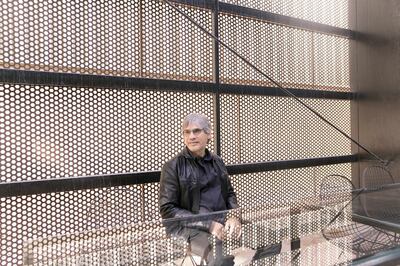
Indeed, the exhibition, curated by Munira Al Sayegh, feels a little like its scenes: a work in progress, nearing completion, and perhaps already there. The work is tacked up rather than framed, and bears the intimacy of a studio space.
“At one point, I wanted to stop,” he says. “I had to force myself to keep going.”
The problem has been getting access to the islands. Al-Ghoussein has had to navigate among a number of government entities – chiefly EAD, the Environmental Agency of Abu Dhabi – as well as ADMAF, the Department of Culture and Tourism and the Ministry of Culture and Knowledge Development. All of them have been supportive, but because the islands vary so much in terms of possession – a number are owned by sheikhs, others by the government, and still others by various institutions, such as the Heritage Council – Al-Ghoussein has had to develop different approaches for access to each. “For a lot of them, I’m sure whoever owned them would not say no,” he says. “But I’m too shy to ask.”
The artist exudes a modesty that is at odds with his CV; though he was the first to represent Kuwait at the Venice Biennale, he seems genuinely gratified whenever anyone compliments one of his works. He is also an important figure within the UAE, having taught at the American University of Sharjah for 15 years. AUS has produced some of the best artists and designers working in the Emirates today, and when we meet at Warehouse421, Al-Ghoussein keeps bumping into former students – including this newspaper’s photographer, who had to shoot her former teacher for this profile.
_____________________
Read more:
Photography: Tarek Al Ghoussein's Al Sawaber at The Third Line, Dubai
Tarek Al Ghoussein to represent Kuwait at the 55th Venice Biennale
A tropical-island, dream-land purgatory place: Monira Al Qadiri lands in Abu Dhabi
_____________________
“That’s the good thing about being in one place so long,” he says. “I can see all my students grow.”
Al-Ghoussein was born in Kuwait, but since his father was a diplomat, he moved around often. Five years ago, he moved from Sharjah to Abu Dhabi, where he helped set up the visual arts department at New York University Abu Dhabi.
His self-effacing attitude also belies a curious facet of his work. It doesn't seem like the kind of photography where backstory would take prominence – each image is formally beautiful and stands on its own. But each of Al-Ghoussein's series entail some kind of complicated process, or even hardship, of being made. For Self-Portrait No.2 (Looking at Palestine) (2003), exhibited at the Sharjah Biennial that year, he photographed himself in a keffiyeh with an inaccessible Palestine in the background (as a Kuwaiti passport-holder he is barred from visiting). He ended up being questioned by the Jordanian police for 24 hours because they refused to believe he had no ill intent. The keffiyeh, he said in an interview, "has such a strong reference in the Arab mind."
In his last project, Al Sawaber, which chronicled an abandoned social housing complex in Kuwait, he had to go around with a face mask because he kept on getting sick from the dirty air. And for Odysseus, he photographed a number of the islands during Ramadan last year, traipsing about in the heat because he didn't dare postpone the access from EAD.
The sense of his sites being inimical to habitation might be more than just an effect: they are chronicles of barriers and his surmounting of them. Odysseus is an apt title: the project has become one of negotiation and travel – and the hidden histories of each island – as much as one of photography.
Tarek Al-Ghoussein’s Odysseus is at Warehouse421 in Abu Dhabi until November 30
